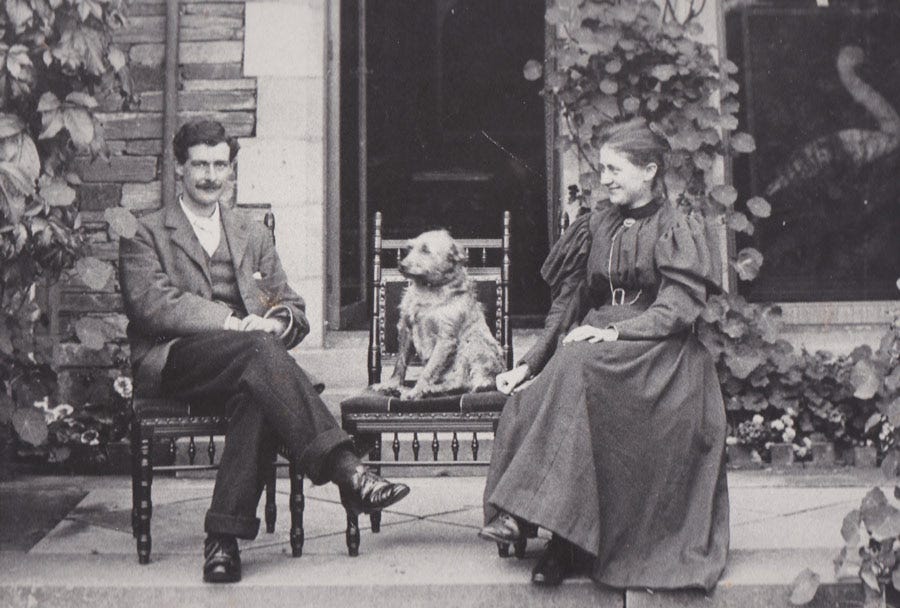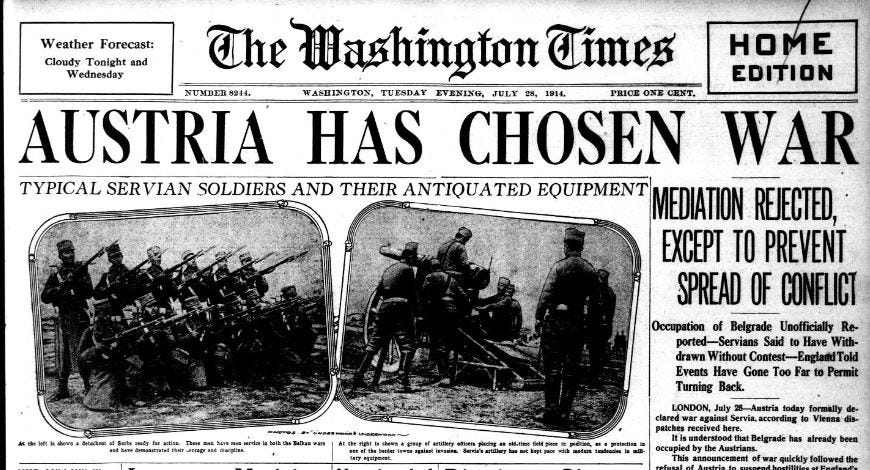On This Day: Peter Rabbit and the First World War
28th July marks the birth of Beatrix Potter and the outbreak of World War I, two vastly different events forever linked by a single date in history
On This Day, 28th July: Beatrix Potter’s Birth and the First World War’s Beginning
There are days in the calendar that quietly hold more weight than others. Days that carry a strange duality, linking vastly different corners of history, yet forever bound by the same numerical stamp. For me, 28th July is one of those days. Two stories, seemingly worlds apart, but both shaped by imagination, conflict, and the very essence of what it means to be human.
Beatrix Potter: The Quiet Revolution of a Rabbit in a Blue Jacket
I was born in the early 80s, a time when children's TV meant wobbly animation, talking animals, and a lot of imagination. Before iPads, before YouTube, and long before CGI rabbits could boogie to pop music, we had books. And one name that stood proud on every nursery shelf was Beatrix Potter.
She was born on this day in 1866, in a world of gas lamps, corsets and rigid Victorian formality. Yet from that environment came a creator whose charm and curiosity would change children’s literature forever.
The story of Peter Rabbit, her most iconic character, is deceptively simple. A young rabbit, disobedient and adventurous, sneaks into Mr McGregor’s garden. There’s danger, there's a moral lesson, and there’s just enough cheekiness to make children fall in love with him. But what Potter did so well, and what still resonates with adults today, is how she wrapped natural observation in storytelling. Her animals weren’t cartoons, they were anatomically correct, detailed, and respectful of nature. She loved the world outside her window, and she brought it to life in watercolour.
Her upbringing, steeped in solitude and restricted social circles, turned out to be a gift for the rest of us. She wasn’t allowed to play with other children, so she observed animals, fungi and the countryside. That intense focus grew into not just art but science. Few people realise she was a mycologist, someone who studied fungi, and she submitted serious scientific papers long before any woman had the freedom to do so easily.
Yet publishing was never easy for her either. Male publishers turned her down flat. Her drawings were seen as too dainty, her stories too sweet. So she self-published The Tale of Peter Rabbit in 1901, and the rest, as they say, is history. By 1902, it was picked up by a publisher and within a year, it had sold 20,000 copies.
But here’s the bit that always sticks with me. Beatrix Potter didn’t just write stories. She understood the power of branding before most people even knew what that was. She patented the Peter Rabbit doll, the board game, the nursery wallpaper. She fought for her rights and became one of the earliest examples of a female author building an empire.
She bought Hill Top Farm in the Lake District and, with her earnings, quietly became a formidable conservationist. By the time of her death in 1943, she had left over 4,000 acres to the National Trust. So, while many of us remember the little jacket and the carrots, her real legacy is a preserved corner of England’s countryside and a publishing model that gave birth to generations of beloved characters.
Her world, her voice, her artistic gaze on animals as both creatures and characters, still speaks to us. In an age that often forgets how to slow down, the stories of Beatrix Potter remind us that the smallest things can hold the most meaning.
The Guns of August: The First Shot in the War to End All Wars
While Beatrix Potter’s life was defined by art and nature, the other anniversary on this day reminds us how quickly that beauty can be swept away.
On 28th July 1914, Austria-Hungary declared war on Serbia. It did not look like the start of something cataclysmic, but it was. It was the match to the powder keg. One month earlier, the assassination of Archduke Franz Ferdinand in Sarajevo had triggered a diplomatic domino effect. But no one could have foreseen the scale of devastation that would follow.
It is staggering to think about now. A regional conflict between two nations, complicated by tangled alliances and imperial pride, escalated into a war that would consume Europe and eventually the world. Within days, Germany and Russia were mobilising. Within weeks, France and Britain were drawn in. The names of battles, now etched in every school textbook and memorial stone, had not yet been written. The Somme. Verdun. Gallipoli. Passchendaele.
Four years of unimaginable horror lay ahead. By the time it ended in 1918, over 16 million people were dead. Entire villages wiped from maps. Empires collapsed. A generation lost.
I’ve visited the battlefields. I’ve walked through the cemeteries in northern France, where rows of white stones stand in silence. You don’t need to have lived through it to feel the weight of it. You just need to be human. The names on the graves, many marked only with “Known Unto God”, speak louder than any textbook.
And still, 1914 didn’t just signal the start of a war. It was the end of an age. Before July, the world felt like it was on the brink of modernity. Steamships, telegrams, grand architecture, growing suffrage movements. There was a belief in progress. But with the outbreak of war, the mask slipped. That sense of invincibility was shattered. The 20th century would not be defined by elegance or invention alone, but by destruction, recovery and reinvention.
Even now, the First World War lingers. It lives in the borders it redrew, in the broken promises of peace, in the poetry of Wilfred Owen and Siegfried Sassoon, and in the silence of Remembrance Sunday. It is not a history we read with distance, but one that shaped the world we live in.
Two Threads in One Day
What strikes me about these two anniversaries, both falling on the same day, is the contrast they offer. One story is about nurturing life through nature and storytelling. The other is about the sheer scale of death that changed the planet forever. Yet both tell us something about our species.
We create. We destroy. We imagine. We fight. We preserve. We forget. And then, sometimes, we remember again.
Beatrix Potter and the First World War are bound by nothing more than a date. Yet when we pause on days like this and dig beneath the surface, we find the essence of what history really is. Not just old names and dusty dates, but reflections of who we were and who we might still become.
So today, I’ll raise a quiet toast to both stories. To Peter Rabbit, still nibbling radishes in picture books and on pyjamas, and to the young soldiers who never came home, many of them barely older than Peter himself.
Let’s not forget either.



